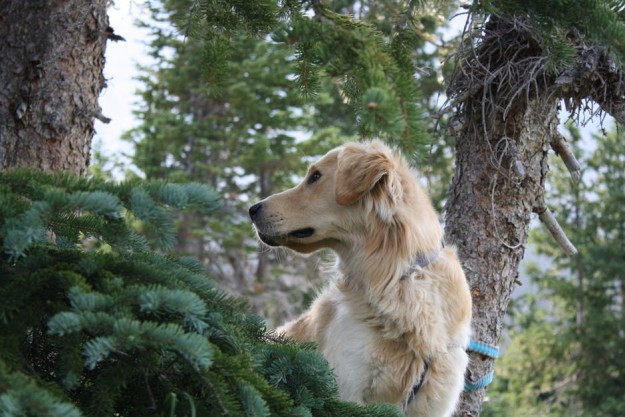
Nova Scotia Duck Tolling Retriever
USD $1800-$2000 Price Avg.
Gun Dog
Group
Purebred
Breed Type
Medium
Size
12-14 years
Lifespan
Breed Information
| Group | Gun Dog |
|---|---|
| Popularity/Rank | 89 |
| Origin | Canada |
| Other Names | Little River Duck Dog, Novie, Scotty, Toller |
| Breed Type | Purebred |
| Price (Avg.) |
USD $1800-$2000
How much does it cost to buy a Nova Scotia Duck Tolling Retriever? Nova Scotia Duck Tolling Retriever are usually priced differently from breeder to breeder and from place to place. As a rough guide, you can expect to pay between $1800 to $2000 if you purchase your dog from a reputable breeder. The price will increase if the dog has a fantastic pedigree. Dogs that already have basic training maybe even more expensive. But, most Nova Scotia Duck Tolling Retrievers can be adopted through a shelter for a lower fee. |
| Size | Medium |
| Weight | 37-51 pounds (17-23 kg) |
| Height | 17-21 inches (43-53 cm) |
| Lifespan | 12-14 years |
| Recognized by |
AKC, FCI
The American Kennel Club in 2003 as a Sporting breed. And FCI in the Retrievers - Flushing Dogs - Water Dogs group, in the Retrievers section. |
| Purpose | Duck Hunting and Retrieving |
| Date of Origin | 19th Century |
| Ancestry | Cocker Spaniels, Irish Setters, Farm Collies |
Appearance & Maintenance
| Coat | Waterproof |
|---|---|
| Coat Colors | Gold, Red |
| Grooming Level | |
| Shedding Level | |
| Eye Color Possibilities | Amber, Brown, Hazel |
| Nose Color Possibilities | Black, Brown |
| Coat Color Possibilities | Red |
| Coat Length | Medium |
| Coat Density | Normal |
| Coat Texture | Straight |
| Recommended Brushes | Comb, Dematter, Nail Clipper, Pin Brush |
| Brushing Frequency | Weekly |
Breed Characteristics
| Temperament | Affectionate, Alert, Brave, Caring, Courageous, Daring, Delicate, Energetic, Gentle, Playful, Respondent, Responsive, Sportive, Vigilant |
|---|---|
| Intelligent | |
| Trainability | |
| Playfulness | |
| Sensitivity Level | |
| Affection Level | |
| Social Interaction Required | |
| Barking | |
| Watchdog Ability | |
| Territorial | |
| Biting Force | Low |
| Mouthiness | |
| Impulse to Wander or Roam | |
| Prey Drive | |
| Adaptability | |
| Tolerates Being Left Alone | |
| Fighting Dog | Not really |
Good & Friendly with
| Apartment Life Friendly | |
|---|---|
| Stranger Friendly | |
| Kid-Friendly | |
| Cat Friendly | |
| Dog Friendly | |
| Office Friendly | No |
| Senior Citizens Friendly | |
| Pet Friendly | |
| Friendly with First Time Owners | Yes |
| Service Dog | Not really |
| Therapy Dog | Not really |
| Detection, Sniffer or Security Dog | Yes |
| Search and Rescue Dog (SAR) | Not really |
| Boat Dog | Yes |
| Cart Pulling or Drafting Dog | Not really |
Health Elements
| Health Issues | |
|---|---|
| Hypoallergenic | No |
| Energy Level | |
| Exercise Required | |
| Sleeping Required | |
| Weight Gain Potential | |
| Weather & Climate | Prefers average to cold weather conditions |
| Stinkiness | Medium |
| Drooling tendency | |
| Activity Level | High |
| Rec. Walk Mileage Per Week | 10 miles |
| Minutes of Activity Per Day | 60 minutes |
Food & Costing
| Avg. Daily Food | 2.5 to 3 cups of high-quality dry food a day, divided into two meals. |
|---|---|
| Cups Per Day | 2.3 cups |
| Daily Cost | $1.20 - $1.40 |
| Monthly Cost | $34.00 - $45.00 |
Reproducibility
| Gestation Duration | 60-64 days |
|---|---|
| How often can the Nova Scotia Duck Tolling Retriever have a litter? | Once a year. |
| Litter Size | 6-10 puppies (Once a year.) |
Description
The Nova Scotia Duck Tolling Retriever, also known as the Toller, is a medium-sized breed of dog that originated in Canada. It is the smallest of the retrievers and is known for its intelligence and eagerness to please. The breed has a unique appearance with its bright red coat and white markings. It has a strong, muscular body with an alert expression and an active gait.
The average lifespan of the Nova Scotia Duck Tolling Retriever is between 10-14 years. They typically weigh between 35-50 pounds and stand at 18-21 inches tall at the shoulder. The breed comes in shades of red ranging from golden to dark chestnut, with white markings on their chest, feet, muzzle, and tail tip.
The Nova Scotia Duck Tolling Retriever has a friendly personality that makes them great family pets. They are intelligent dogs that are eager to please their owners and learn quickly when given proper training and socialization from an early age. They are also very active dogs that need plenty of exercise to stay healthy both physically and mentally.
Nova Scotia Duck Tolling Retrievers get along well with other dogs as well as children if they have been properly socialized from puppyhood onwards. They can also be friendly towards other animals if they have been raised around them since they were young puppies but may be wary or even aggressive towards unfamiliar animals due to their hunting instincts so it’s important to introduce them slowly when introducing new animals into your home environment or when taking them out for walks in public places where there may be unfamiliar animals present such as cats or squirrels etc..
The temperament of the Nova Scotia Duck Tolling Retriever is generally described as being loyal, energetic, playful, intelligent, alert yet gentle natured which makes them great family pets who will bond closely with their owners over time if given enough love and attention throughout their lives together .
In terms of health issues common among this breed include hip dysplasia (a genetic condition affecting joints), eye problems such as progressive retinal atrophy (PRA) which can lead to blindness over time , ear infections due to excessive wax build up , allergies , skin conditions such as hot spots ,and obesity due to overeating . Regular vet check ups should help identify any potential health issues early on so that appropriate treatment can be administered promptly .
Nova Scotia Duck Tolling Retrievers have a high level of adaptability making them suitable for most living environments including apartments provided they get enough exercise each day . Some benefits associated with owning this breed include being highly trainable , having low grooming needs , being good watchdogs due to their alert nature , being good swimmers thanks to their webbed feet which make them ideal companions for those who enjoy spending time near water activities such as fishing or boating etc..
History
The Nova Scotia Duck Tolling Retriever is a breed of dog that was developed in Nova Scotia, Canada. The breed was originally used for hunting ducks and other waterfowl. The breed is also known as the Little River Duck Dog, the Yarmouth Toller, and the Tolling Retriever. The Nova Scotia Duck Tolling Retriever is the only recognized breed of dog that is native to Canada.
The breed was developed in the early 19th century by settlers in Nova Scotia. The breed was created by crossing various types of retrievers with other dogs, such as the Golden Retriever, Cocker Spaniel, and Labrador Retriever. The resulting dogs were used to toll, or lure, ducks within shooting range of hunters. The dogs would play near the shoreline, attracting the attention of curious ducks. When the ducks came close enough, the hunters would shoot them.
The Nova Scotia Duck Tolling Retriever became popular in North America during the 20th century. However, the breed nearly became extinct in the early 21st century due to a lack of interest from hunters and dog fanciers. Fortunately, a group of dedicated breeders worked to revive the breed and increase its popularity. Today, the Nova Scotia Duck Tolling Retriever is a popular companion animal and working dog in many parts of the world.
Nova Scotia Duck Tolling Retriever Posts
Explore Nova Scotia Duck Tolling Retriever's photos, videos, activities, stories, and facts.




